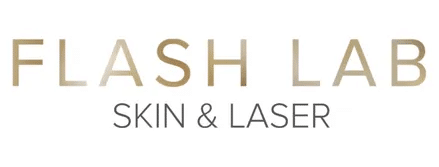
18 Mar 2023
Which Chemical Peel Is Best For You?
Chemical peels are becoming increasingly popular for treating all kinds of skin conditions and concerns. From improving skin texture and tone to diminishing acne scars to erasing signs of aging, chemical peels boast incredible skin rejuvenation benefits.
But before you take the plunge, it’s important to understand the different types of chemical peels, how they work, and what to expect following a treatment. In this post, we’ll take a closer look at the different types of chemical peels, their benefits, and what to expect during the recovery process.
What is a Chemical Peel?
A chemical peel is a type of skin resurfacing procedure that works by removing damaged cells from the surface of your face to reveal new ones underneath. They can be used to treat acne, wrinkles, and sun damage by removing dead surface cells from your face, revealing brighter, smoother, and more even-toned complexion.
What are the Different Types of Chemical Peels?
Depending on the skin concerns you’re addressing with the procedure, you’ll choose a chemical peel in one of three depths: light (superficial) chemical peels, medium chemical peels, and deep chemical peels. The depth of a chemical peel is determined by the concentration of the acid and its strength. The higher the concentration, the deeper it will penetrate the skin.
What is a Light Chemical Peel?
A light (superficial) chemical peel removes the outer layer of skin (epidermis). Superficial peels are the least abrasive of all chemical peel solutions and improve the appearance of mild fine lines and wrinkles, acne, acne scars, uneven skin tone and texture, melasma, and rosacea. Light chemical peels are highly customizable, and safe for nearly all skin types and tones.
During your treatment, a chemical solution is used to penetrate the epidermis (top layer of skin). The chemical solution used in superficial peels often includes alpha-hydroxy acids (AHAs) and beta-hydroxy acids (BHAs) such as glycolic acid, lactic acid, and/or salicylic acid. Clients can expect to feel a mild to moderate heat or a brief tingling sensation. A fan is used to help cool the skin during treatment, and nourishing products are applied post treatment to soothe the skin.
There is minimal downtime with superficial peels. Clients may experience mild flaking for 1-4 days post-treatment, but If you have oily skin, you may not peel at all! The results of a light chemical peel will develop over two weeks as your skin heals. Most clients require a series of light chemical peels for desired results.
Superficial TCA Peelsare the most versatile of all chemical peels, and gentle enough to be done every 4-6 weeks for optimal cell turnover.
What is a Medium Chemical Peel?
The results before(left) and after(right) one VI Peel treatment at Flash Lab Skin & Laser in NYC.
A medium-depth chemical peel removes skin cells from the epidermis and from portions of the upper part of your middle layer of skin (dermis). It’s used to treat wrinkles, acne scars, and uneven skin tone.
Our favorite medium-depth chemical peel, the VI Peel, utilizes a powerful blend of TCA, retinoic acid, salicylic acid, vitamin C, and phenol to exfoliate the skin and reveal the smoother, brighter, less damaged layers of the skin underneath. Despite being a medium-depth peel, the VI Peel procedure is comfortable, customizable, and uniquely designed for all skin types and skin tones.
There is about one week of downtime after a VI Peel. Clients can expect to experience moderate to heavy flaking or peeling in sheets. The peeling will begin anywhere from 1-3 days after your treatment, and can last up to one week. Full results of the VI Peel can be seen about three weeks post-treatment as your skin fully heals. Clients often require a series of two to three medium peels to achieve desired results.
Check out the VI Peel Ultimate Guide to learn why the VI Peel is so hot right now.
What is a Deep Chemical Peel?
Deep chemical peels are the most intense and aggressive of the chemical peel skin resurfacing options, and involves an intense exfoliation using a chemical solution such as phenol or croton oil to penetrate through the epidermis, papillary dermis, and into the reticular dermis.
The best candidate for a deep chemical peel is someone with a lighter skin tone that is looking to correct moderate to severe skin concerns, including wrinkles, sun damage, acne scars, and precancerous skin growths.
A deep chemical peel comes with a recovery period of at least two full weeks, and there is greater risk of serious side effects. Following a deep peel, you can expect severe redness, swelling, burning, and throbbing. If skin around the eyes is treated, you may experience swollen eyelids. Pain, redness, swelling, severe crusting, peeling, and flaking often persist for one to two weeks.
The full results will develop over the course of several months as your skin fully heals. Deep chemical peels produce dramatic results after one treatment that last for years.
The Takeaway
Chemical peels are one of the most popular non-surgical procedures among clients today. There are many different types of peels and each one has its own benefits. The best way to determine what type of chemical peel is right for you is to consult with an esthetician or dermatologist. Your provider will thoroughly assess your skin to recommend a personalized treatment plan designed to treat your unique skin concerns.
Ready to Get Peeling?
Book online or call our office at 646.998.5277 to schedule your complimentary consultation today!
Flash Lab Skin & Laser is a full-service medical spa, offering the latest generation of advanced treatments and technologies that rejuvenate, revitalize, sculpt, and restore the face and body. Our experienced team of aestheticians is committed to providing the highest quality of service, tailored to address the unique, and individual concerns of our clients.
NEW CLIENT SPECIAL: 20% OFF your first treatment at Flash Lab Skin & Laser.
